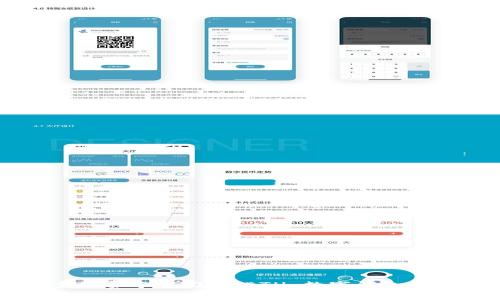在数字货币的世界里,以太坊作为一种流行的加密货币,越来越受到用户的关注。而在进行以太坊转账时,用户常常会面临一个重要转账手续费。在这篇文章中,我们将通过分析0.1以太坊的转账所需的手续费,深入探讨其背后的影响因素、手续费的计算方法,以及如何有效地降低手续费。
以太坊转账手续费,也常被称作“Gas费”,是用户在以太坊网络上进行交易或执行合约所需支付的费用。该费用主要是为了奖励矿工(或验证者)处理和确认交易。Gas费用并不是固定的,而是由多种因素决定的,包括网络拥堵情况、交易的复杂度等。

以太坊的手续费由两部分组成:Gas Limit和Gas Price。Gas Limit是指你愿意为该交易提供的最大Gas量,Gas Price则是每单位Gas(称为“Gwei”)用户愿意支付的价格。手续费的计算公式为:
手续费 = Gas Limit × Gas Price
以太坊网络中,Gas Price在市场条件变化时会波动,因此用户的交易费用也会随之变化。在网络拥堵时,Gas Price可能会迅速上升,导致用户需要支付更高的费用才能让交易被及时确认。
多种因素会影响以太坊的转账手续费,包括:

如果用户希望在进行以太坊转账时减少手续费,可以考虑以下几种方法:
以0.1以太坊为例,假设当前平均Gas Price为100 Gwei且Gas Limit为21000,那么手续费的计算如下:
手续费 = 21000 × 100 Gwei = 2,100,000 Gwei = 0.0021 ETH
因此,用户总共需要支付的费用为0.1 ETH 0.0021 ETH,即0.1021 ETH。通过这种方式,我们可以看到实际转账成本并不低。有时,手续费甚至会超过转账金额。本节将为我们之后的讨论提供具体的背景数据。
接下来,我们将深入探讨五个与以太坊转账及其手续费相关的
以太坊的交易确认时间在不同情况下有所不同。一般来说,交易的确认时间与Gas Price和网络拥堵程度密切相关。若用户希望尽快确认交易,通常需要支付更高的Gas Price。此时,我们可以看到,用户所支付的手续费在某种程度上是与时间紧迫性相关的。
例如,在2021年某些热门DeFi项目上线时,可能会出现数十万的交易在短时间内发起,这种情况下,网络的拥堵非常严重,手续费被瞬间推高。有的用户为了不让交易延迟确认,甚至愿意支付数百美元的手续费。
在这种情况下,用户面临的是选择:是支付更高的手续费迅速完成交易,还是选择相对便宜但可能导致交易延迟的手续费?选择的不同会直接影响交易的成本。对于新手用户而言,如何权衡快速确认与费用之间的利弊至关重要。
The rise of Ethereum's layer two solutions like Optimistic Rollup and zk-Rollup aims to alleviate the congestion issues on the Ethereum mainnet, thereby reducing transaction fees. However, like any technology, these solutions come with their own advantages and disadvantages.
One significant advantage of using layer two solutions is lower fees. Because transactions are batched off-chain, users can enjoy much cheaper fees compared to those on the Ethereum mainnet. This makes them particularly appealing for smaller transactions, such as the 0.1 ETH transfers discussed earlier.
However, layer two solutions also come with their own limitations. For instance, while they greatly reduce fees and increase transaction speeds, they might compromise a certain level of decentralization and security compared to the Ethereum mainnet. Additionally, the complexity of interacting with these solutions can be a barrier for less technically inclined users. For users unfamiliar with layer two technologies, it can be daunting to understand how to effectively switch between layer one and layer two.
In summary, while layer two solutions offer a way to navigate high fees and congestion on the Ethereum network, potential drawbacks in terms of complexity and security need to be carefully considered before adoption.
When discussing fees, it is essential to put Ethereum's transaction costs into perspective by comparing them with other cryptocurrencies. For instance, Bitcoin also has fluctuating fees, albeit through a separate mechanism known as the "block size," which influences how many transactions can be included in each block. During peak usage times, Bitcoin's fees can skyrocket, similar to Ethereum.
However, cryptocurrencies like Binance Smart Chain (BSC) and Solana offer significantly lower transaction fees—often a fraction of a cent—thanks to their unique consensus algorithms and efficient network structures. This creates an interesting dynamic where projects seeking to lower fees might consider adopting technologies from these cheaper chains.
Another point of comparison is user behavior. Ethereum's higher fees have prompted many projects to look for scalability solutions, while lower-cost networks have attracted new projects looking to avoid Ethereum's limitations. In turn, this has sparked debates and discussions within the crypto community surrounding the value of decentralization versus cost efficiency.
In summary, while Ethereum's fees can be higher than many alternative cryptocurrencies, they also come with the advantages of a robust, established, and decentralized network.
以太坊手续费的波动性由多个因素造成。用户对网络资源的需求驱动价格变化,当需求大于供应时,Gas Price会迅速上升。例如,热门交易或合约活动会导致交易量激增。
此外,网络参与者的行为也会影响Gas Price。许多人通过竞标提高价格以促进自己的交易。这种行为造成了投标战争,进一步推高了成本。当项目进行时,例如初始代币发行(IDO)事件,手续费往往会激增,用户为了超越竞争者,愿意支付更高价位的Gas。
因此,以太坊手续费的波动性不仅是供需关系的结果,同时也反映出用户行为和市场趋势。
选择合适的钱包进行以太坊转账是用户操作成功的关键因素之一。用户可以在热钱包和冷钱包之间进行选择。热钱包提供更高的便利性,适合日常交易,但安全性可能较低。冷钱包虽然操作不便,却能提供更高水平的安全性。
在选择钱包时,用户还需考虑钱包对手续费的支持情况。例如,一些数字钱包允许用户手动输入Gas Price,使用户能够主导费用,帮助其进行费用控制。同时,也要注意钱包的多币种支持程度,以便在未来可能的交易中,无需多次切换钱包。
总的来说,合适的钱包不仅能提高用户的交易体验,同时也是降低手续费的一个有效方法。
通过本文的分析,我们发现,以太坊的转账手续费问题涉及多方面的内容,无论是手续费的计算、影响因素,还是如何减少手续费,都是用户十分关心的话题。希望本文能够为广大以太坊用户提供更深入的理解,助力他们更加高效地进行数字货币转账。
leave a reply